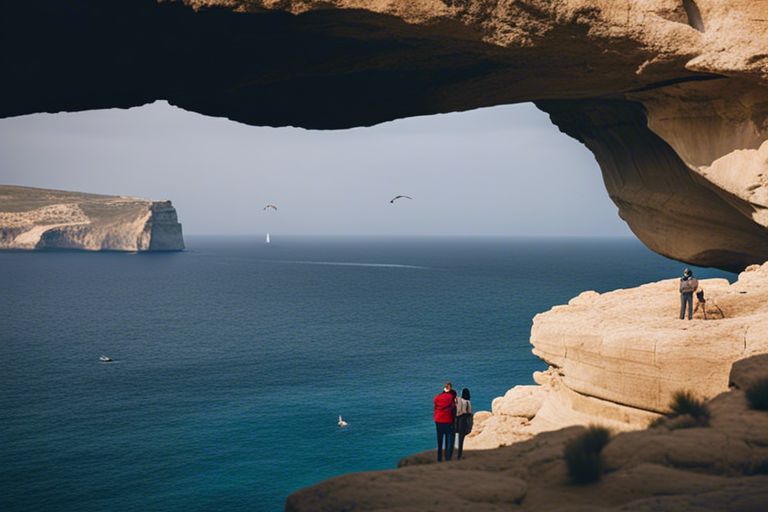Best Spots for Bird Watching in Malta

Just off the coast of Sicily, Malta may be a small island nation, but it is teeming with a rich variety of bird species. With its location along the Mediterranean flyway, this archipelago becomes a critical resting and feeding spot for numerous migratory birds each year. For bird enthusiasts and nature lovers, Malta offers an incredible opportunity to observe a diverse range of avian species in stunning natural habitats.
From coastal cliffs to wetlands and nature reserves, Malta boasts a plethora of prime locations for bird watching. The islands’ unique geography and mild climate make it a haven for both resident and visiting birds. Some of the most sought-after species to spot include Flamingos, Herons, and White Storks. Whether you are an experienced birder or a casual observer, there is something for everyone in Malta’s diverse birdwatching sites.
Join us as we explore some of the best spots for bird watching in Malta, and discover the beauty and wonder of the island’s avian inhabitants. Grab your binoculars, camera, and sense of adventure as we begin on a birdwatching journey through Malta’s breathtaking landscapes and witness some of the most remarkable bird species in their natural habitats.
Understanding Birdwatching in Malta
While visiting the picturesque archipelago of Malta, birdwatching enthusiasts are in for a treat with the diverse array of bird species that inhabit or migrate through the islands. Malta’s strategic location in the Mediterranean makes it a crucial stopover point for birds migrating between Europe and Africa. The mild climate, varied habitats, and suitable breeding grounds attract a rich variety of birdlife, making it an ideal destination for birdwatchers.
The Importance of Malta for Bird Migration
Bird migration is a natural phenomenon where birds travel thousands of kilometers to find more favorable conditions for breeding, feeding, and survival. Malta’s location at the crossroads of continents makes it a vital resting point for these birds during their long journeys. Species such as raptors, swallows, and waders can be spotted in large numbers during the migration seasons, enhancing the island’s significance for birdwatching.
Conservation efforts in Malta focus on protecting these vital habitats and ensuring the safety of migratory birds. Various organizations, such as BirdLife Malta, work tirelessly to monitor bird populations, raise awareness about the importance of biodiversity, and advocate for policies that safeguard these species. Birdwatchers can contribute to these efforts by respecting wildlife, habitats, and following ethical guidelines while observing birds.
Seasonal Variations in Bird Species
Malta experiences distinct seasonal variations in bird species, with the winter months attracting different birds than the summer season. Winter in Malta brings species like ducks, waders, and thrushes seeking refuge from colder climates, while the summer months see the arrival of breeding birds such as shearwaters, swifts, and warblers. Birdwatchers can plan their visits according to the seasons to witness these unique avian spectacles.
One of the best times for birdwatching in Malta is during the spring and autumn migration seasons. During these periods, the islands become a hotspot for birdwatchers as a diverse range of species pass through on their journey. The varied landscapes of Malta offer different habitats for birds, from cliffs to wetlands, providing ample opportunities for observing a wide selection of species.
Conservation Efforts and Birdwatching Ethics
Any birdwatcher in Malta should prioritize conservation and adhere to ethical guidelines to ensure the well-being of the birds and their habitats. Respecting nesting areas, avoiding disturbance to wildlife, and refraining from littering are imperative practices for responsible birdwatching. By following these guidelines, birdwatchers can help protect the delicate ecosystems that support Malta’s diverse birdlife.
Malta’s commitment to conservation and sustainable practices has led to improved protection for endangered bird species and their habitats. By supporting ecotourism initiatives, birdwatchers contribute to local economies while promoting environmental stewardship. With continued efforts to conserve Malta’s rich biodiversity, birdwatching enthusiasts can enjoy this birding paradise for years to come.
Essential Gear for Birdwatching in Malta
Some birdwatching enthusiasts may underestimate the importance of having the right gear when heading out to observe avian species in Malta. To enhance your birdwatching experience and make the most of your trip, it’s crucial to invest in quality equipment that will help you spot and identify birds more effectively.
Choosing the Right Binoculars and Spotting Scopes
The binoculars and spotting scopes you choose can greatly impact your birdwatching experience in Malta. Opt for binoculars with a magnification power of at least 8x to 10x and an objective lens diameter of 42mm for crisp and clear views. A spotting scope with a higher magnification range is ideal for observing birds from a distance, especially in open habitats like wetlands or cliffs.
Consider factors such as weight, field of view, and close focus capabilities when selecting your optics. Look for waterproof and fog-proof binoculars and scopes to withstand Malta’s variable weather conditions and ensure durability during your birdwatching expeditions.
Investing in high-quality optics may require a significant financial commitment, but the sharp and detailed views they provide will greatly enhance your birdwatching adventures in Malta, allowing you to appreciate the beauty of the various bird species in the region.
Clothing and Footwear for Various Terrains
The clothing and footwear you wear while birdwatching in Malta play a crucial role in ensuring your comfort and safety during outdoor excursions. Malta’s diverse landscapes, including coastal areas, woodlands, and rocky terrain, require adaptable attire to navigate through different environments.
With temperatures varying throughout the day, layering your clothing is vital to adjust to changing weather conditions. Wearing lightweight, moisture-wicking fabrics will help you stay cool and dry during warm days, while packing a waterproof jacket is crucial for unexpected rain showers.
Proper footwear with good grip is vital for traversing Malta’s rugged terrain without slipping or getting blisters. Opt for sturdy hiking boots or shoes that provide ankle support and traction on various surfaces, ensuring you can move comfortably while exploring different birdwatching sites across the island.
Clothing and footwear tailored to Malta’s diverse landscapes will not only enhance your birdwatching experience but also provide the necessary protection and comfort to fully enjoy your outings in nature.
Guidebooks and Apps to Enhance Birdwatching
The guidebooks and apps available for birdwatching enthusiasts in Malta offer valuable information to identify bird species, locate prime birdwatching spots, and enrich your overall birdwatching experience. These resources provide detailed descriptions, maps, and bird calls to assist you in recognizing and learning about the avian species you encounter.
Utilizing guidebooks and apps can significantly enhance your ability to spot and identify birds in the field, making each birdwatching excursion in Malta more informative and rewarding. Whether you’re a novice birdwatcher or a seasoned enthusiast, having these resources at hand will elevate your birdwatching adventures on the picturesque island.
Northern Malta: A Birdwatcher’s Haven
Ghadira Nature Reserve
Unlike other regions in Malta, Northern Malta offers a paradise for bird watchers with its serene landscapes and diverse bird species. Ghadira Nature Reserve, located in Mellieha, is a must-visit spot for any bird enthusiast. This reserve is home to a variety of bird species, including the graceful flamingos, elegant herons, and other migratory birds that stop by during their journey.
Ghadira Nature Reserve boasts lush wetlands that provide a perfect habitat for these birds to thrive. The reserve also offers excellent bird hides for visitors to observe these magnificent creatures in their natural environment. Bird watchers can spend hours immersing themselves in the tranquil surroundings and spotting different bird species.
For a truly breathtaking experience, be sure to visit Ghadira Nature Reserve during the early morning or late afternoon when the birds are most active. Whether you are a seasoned birder or a nature enthusiast, Ghadira Nature Reserve will surely captivate you with its beauty and the diverse range of bird species it hosts.
Simar Nature Reserve
Simar Nature Reserve is another gem in Northern Malta for bird watching enthusiasts. Situated in the north-west of Malta, this reserve is known for its unique coastal ecosystem and the diverse range of bird species it attracts. From waders to seabirds, Simar Nature Reserve offers a haven for bird watchers to observe these magnificent creatures in their natural habitat.
Apart from bird watching, Simar Nature Reserve also provides stunning views of the surrounding cliffs and the crystal-clear Mediterranean Sea. The reserve is a hotspot for migratory birds, making it an ideal location for bird enthusiasts to witness these seasonal visitors up close. With well-maintained trails and observation points, Simar Nature Reserve ensures that visitors have a comfortable and rewarding bird watching experience.
Simar Nature Reserve is a haven for bird watchers seeking to immerse themselves in nature and observe a wide variety of bird species. With its picturesque setting and rich avian biodiversity, this reserve promises an unforgettable bird watching adventure for all nature lovers.
The Cliffs and Coasts of Western Malta
Rdum Majjiesa to Ras ir-Raheb
Your bird-watching experience in Malta is not complete without a visit to the stunning cliffs and coasts of Western Malta, particularly the stretch from Rdum Majjiesa to Ras ir-Raheb. This area offers a diverse range of habitats, making it a hotspot for a variety of bird species. Whether you’re looking to spot seabirds soaring above the cliffs or smaller species hiding in the rocky crevices, this coastal area is a must-visit for any bird enthusiast.
The cliffs provide a spectacular vantage point for observing both resident and migratory birds. Keep an eye out for species such as Cory’s Shearwaters, Yellow-legged Gulls, and Peregrine Falcons as they glide effortlessly along the coastline. The rugged terrain and crystal-clear waters below create a picturesque backdrop for your bird-watching adventure, making it a truly unforgettable experience.
Make sure to bring along your binoculars and camera to capture the beauty of the birds against the backdrop of the Mediterranean Sea. From the mesmerizing views of the cliffs to the diverse bird species that call this area home, Rdum Majjiesa to Ras ir-Raheb is a prime location for bird watching in Malta.
Dwejra Bay and the Azure Window Site
Your next stop for bird watching in Malta should be Dwejra Bay and the iconic Azure Window site. This area was once home to the majestic Azure Window rock formation before its collapse in 2017. Despite this natural wonder’s disappearance, the area remains a popular destination for bird enthusiasts due to its rich biodiversity and unique geological features.
Central Malta’s Countryside
Buskett Gardens and Verdala Palace
To experience the beauty of Central Malta’s countryside and indulge in some bird watching, head to Buskett Gardens and Verdala Palace. The Buskett Gardens, one of the few woodland areas in Malta, are a haven for birds such as chiffchaffs, blackcaps, and robins. The gardens are especially popular during the spring and autumn migration seasons when a diverse range of bird species can be spotted. Adjacent to the gardens is the majestic Verdala Palace, a former residence of the President of Malta, which adds to the scenic charm of the area.
Historical records indicate that Buskett Gardens were originally planted by the Knights of St. John in the 16th century, making it a historically significant site as well. The lush greenery and peaceful ambiance make it a perfect spot for bird watching enthusiasts looking to escape the hustle and bustle of urban life. Visitors can take leisurely walks along the winding paths, admiring the flora and fauna while keeping an eye out for various bird species that call this tranquil oasis home.
Ta' Qali National Park
To explore another bird watching hotspot in Central Malta, visit Ta’ Qali National Park. Verdala in the park’s diverse habitats provide shelter and food for a wide variety of bird species, including kestrels, nightingales, and woodpeckers. Set against a backdrop of rugged limestone quarries and rolling fields, bird watchers can enjoy a unique blend of natural beauty and avian diversity.
The Ta’ Qali National Park also boasts a rich history, having served as a British military airfield during World War II. Today, the park offers visitors a chance to reconnect with nature and witness the resilience of wildlife in a post-war landscape. Bird watchers can explore the park’s trails and open spaces, keeping a lookout for both common and endangered bird species that have made Ta’ Qali their home.
The South of Malta: Uncharted Territory for Birdwatchers
Marsaxlokk and Delimara Peninsula
Keep your binoculars handy as you explore the South of Malta, an uncharted territory for many birdwatchers. The quaint fishing village of Marsaxlokk and the rugged Delimara Peninsula offer a unique opportunity to observe a variety of bird species in their natural habitat. The coastal cliffs and rocky shores provide a picturesque backdrop for spotting seabirds such as gulls, terns, and even the occasional migrating raptor.
The Delimara Peninsula is particularly known for its diverse bird population, attracting both local and migrating species. Birdwatchers will be thrilled to spot species such as the Blue Rock Thrush, Sardinian Warbler, and Spectacled Warbler among the rocky outcrops. The area’s isolation and natural beauty make it a tranquil spot for observing birds without the crowds found in more popular locations.
Don’t miss the opportunity to visit the Marsaxlokk harbor early in the morning when local fishermen bring in their catch, attracting scavenging gulls and herons. As you stroll along the waterfront, keep an eye out for migrating waders such as sandpipers and plovers probing the mudflats for food. The unique mix of marine and terrestrial habitats in this region makes it a hotspot for bird diversity.
Ghar Dalam Cave and Gardens
To fully immerse yourself in the natural wonders of the South of Malta, a visit to the Ghar Dalam Cave and Gardens is a must. The Ghar Dalam Cave is a geological wonder, with a history dating back thousands of years. Apart from its geological significance, the cave is also home to a colony of Greater Horseshoe Bats, making it a popular spot for bat enthusiasts.
The adjacent gardens provide a lush oasis for both birds and visitors alike. Keep an eye out for species such as the Chaffinch, Greenfinch, and even the occasional Hoopoe flitting among the trees and shrubs. The tranquil atmosphere of the gardens offers a peaceful respite for birdwatchers looking to connect with nature in a unique setting.
The Island of Gozo: A Unique Experience
The Salt Pans of Xwejni Bay
Not far from the village of Marsalforn in Gozo lies the picturesque Xwejni Bay, home to a stunning array of salt pans that have been in operation for centuries. These salt pans are man-made structures used to harvest salt from the sea, creating a unique and beautiful landscape that is perfect for birdwatching. The pans are flooded with seawater, and as the water evaporates, it leaves behind a shimmering white layer of salt on the terracotta pans. This process not only produces delicious sea salt but also attracts a variety of bird species looking to feed on the salt-loving organisms present in the water.
On a visit to the Salt Pans of Xwejni Bay, birdwatchers can spot a plethora of bird species, including Kentish plovers, ringed plovers, and little egrets. The juxtaposition of the bright blue Mediterranean Sea against the stark white salt pans creates a stunning backdrop for observing these winged creatures in their natural habitat. Additionally, the surrounding area is rich in flora and fauna, making it a hotspot for biodiversity enthusiasts as well.
For birdwatchers seeking a truly unique experience, a visit to the Salt Pans of Xwejni Bay is a must. The combination of natural beauty, historical significance, and abundant birdlife makes this spot on the island of Gozo a paradise for nature lovers and photographers alike.
Ta' Ċenċ Cliffs
Gozo is famous for its rugged coastline, and the Ta’ Ċenċ Cliffs are no exception. These dramatic cliffs rise over 120 meters above sea level, offering unparalleled views of the Mediterranean Sea and the surrounding countryside. The area is a designated Important Bird Area by BirdLife International, highlighting its significance as a habitat for various bird species.
Visitors to the Ta’ Ċenċ Cliffs can expect to see stunning seabirds such as Yelkouan shearwaters, Cory’s shearwaters, and European storm petrels soaring above the cliffs. The diverse range of habitats, including garigue and maquis vegetation, also attracts a wide variety of migratory birds during the spring and autumn seasons.
The Ta’ Ċenċ Cliffs offer a birdwatching experience like no other on the island of Gozo. From the thrill of spotting rare seabirds to the magnificent views of the Mediterranean Sea, this location is a haven for nature enthusiasts and ornithologists seeking to explore the diverse avifauna of Malta.
Comino: The Secluded Birdwatching Gem
The Ponds and Surrounding Islets
Now, with its peaceful surroundings and abundance of wildlife, Comino is a hidden gem for birdwatching enthusiasts. The Ponds on the island provide the perfect habitat for various bird species, including migratory birds stopping by during their journey. The surrounding islets, such as Kemmunett and Santa Marija, also offer fantastic opportunities to spot seabirds nesting along the cliffs.
The diverse range of bird species that can be observed in this area is truly remarkable. From colorful kingfishers to majestic herons, birdwatchers can witness nature’s beauty up close. The peaceful atmosphere adds to the experience, allowing visitors to immerse themselves in the sights and sounds of the avian world.
Exploring the Ponds and surrounding islets provides a unique perspective on the ecological importance of these habitats. Birdwatchers can learn about the delicate balance of nature and the significant role these areas play in supporting diverse bird populations throughout the year.
The Blue Lagoon and Its Environment
Resident on the island, the Blue Lagoon is a breathtaking natural wonder that offers a different birdwatching experience. The crystal-clear waters and stunning limestone cliffs create a picturesque backdrop for observing seabirds diving for fish and gliding gracefully across the sky. The lagoon’s environment is a paradise for birdwatchers seeking a tranquil setting to appreciate nature’s wonders.
The Blue Lagoon and its surrounding environment are teeming with life, from fish swimming in the turquoise waters to seabirds nesting on the rocky cliffs. Birdwatchers can witness the harmony of nature as various species coexist in this pristine ecosystem. The secluded location of the Blue Lagoon adds to its charm, providing a peaceful retreat for those seeking a unique birdwatching experience.
Off the Beaten Track: Lesser-Known Birdwatching Locations
Wied il-Għasel and the Mosta Valley
Valley birdwatching spots in Malta, such as Wied il-Għasel and the Mosta Valley, offer a serene and secluded experience away from the more popular tourist locations. Wied il-Għasel, located near the village of Mgarr, is a picturesque valley lined with lush vegetation and dotted with freshwater springs. Birdwatchers can spot a variety of species here, including raptors such as kestrels and honey buzzards.
Exploring the Mosta Valley, situated in the central part of Malta, presents birdwatchers with a unique opportunity to observe a diverse range of birdlife in a tranquil setting. The valley is home to a mix of resident and migratory birds, making it an ideal spot for year-round birdwatching. Species like the colourful European bee-eater and the elusive cuckoo can often be spotted in the area.
For birdwatchers seeking a peaceful escape amidst stunning natural surroundings, Wied il-Għasel and the Mosta Valley are hidden gems that promise memorable birdwatching experiences. These lesser-known locations boast a rich avian population and offer a chance to witness Malta’s birdlife in a more secluded and intimate setting.
Il-Majjistral Nature and History Park
Trails winding through the rugged landscape of Il-Majjistral Nature and History Park provide birdwatchers with a unique opportunity to observe Malta’s diverse avifauna in a pristine coastal environment. The park, located in the northwest of the island, is a haven for birdlife due to its varied habitats, which include coastal cliffs, garrigue scrubland, and maquis vegetation.
Lesser-known birdwatching spots within Il-Majjistral Nature and History Park offer sightings of species such as the colourful blue rock thrush and the majestic peregrine falcon. Birdwatching enthusiasts can follow designated trails that lead to secluded coves and rocky outcrops where they can observe seabirds and raptors in their natural habitat.
With its unspoiled landscapes and diverse bird species, Il-Majjistral Nature and History Park is a hidden gem for birdwatchers looking to explore off the beaten track in Malta. The park’s secluded corners provide a peaceful and scenic setting for observing birds in their natural environment, away from the hustle and bustle of more popular tourist spots.
Building your Birdwatching Itinerary in Malta
Despite its small size, Malta offers a variety of birdwatching locations that cater to different species throughout the year. When planning your birdwatching itinerary in Malta, it’s crucial to prioritize locations based on the time of year to maximize your chances of spotting a wide range of bird species.
Prioritizing Locations Based on Time of Year
Birdwatching enthusiasts visiting Malta in the winter months should prioritize coastal areas such as Majjistral Nature and History Park, where they may catch a glimpse of migrating waders and seabirds. In spring, the Buskett Gardens and the Girgenti Valley become hotspots for birdwatching as they attract a variety of migratory birds heading north. Summer months are ideal for exploring the Maltese cliffs in Dingli and Blue Grotto to observe nesting seabirds such as Yelkouan Shearwaters and Storm Petrels.
For a well-rounded birdwatching itinerary in Malta, consider visiting the Island of Gozo in autumn, where you can witness the spectacle of raptor migration at Ta’ Cenc Cliffs. Additionally, exploring the wetlands at Is-Simar Nature Reserve can offer sightings of various waterfowl species such as flamingos and herons.
By prioritizing locations based on the time of year, birdwatchers can tailor their itineraries to maximize their chances of spotting diverse bird species in Malta’s various habitats.
Joining Local Birdwatching Groups and Tours
Tours and guided walks led by local birdwatching experts can enhance your birdwatching experience in Malta. Joining local groups or booking tours with experienced guides can provide valuable insights into the best birdwatching locations, bird behavior, and identification tips.
Local birdwatching groups often organize group outings and events, offering opportunities to connect with like-minded individuals and share your passion for birds. They may also provide access to exclusive birdwatching sites and bird hides that are not easily accessible to the public.
Whether you are a beginner or a seasoned birdwatcher, joining local birdwatching groups and tours in Malta can enrich your birdwatching adventures and create memorable experiences while exploring the diverse birdlife of the Maltese archipelago.
Record Keeping and Contributing to Citizen Science
Tours and birdwatching expeditions in Malta present a unique opportunity for birdwatchers to contribute to citizen science initiatives by recording their sightings and observations. Keeping a detailed birding journal or contributing data to online platforms such as eBird can help researchers monitor bird populations, migration patterns, and conservation efforts.
By documenting your birdwatching observations and sharing them with scientific communities, you not only enhance your birdwatching skills but also contribute to the conservation and protection of bird species in Malta and beyond.
Participating in citizen science initiatives through record-keeping can empower birdwatchers to make a positive impact on bird conservation efforts while enjoying the natural beauty of Malta’s avifauna.
Summing up
Ultimately, Malta offers some of the best spots for bird watching in the Mediterranean region. From the cliffs of Dingli to the wetlands of Is-Simar Nature Reserve, bird enthusiasts can enjoy a diverse range of bird species within easy reach of each other. The islands’ strategic location along bird migration routes also makes it a hotspot for observing seasonal visitors and rare sightings.
Whether you are a beginner or an experienced birder, Malta’s varied habitats provide ample opportunities to spot a wide array of bird species, including flamingos, raptors, and seabirds. The islands’ conservation efforts, such as the bird sanctuaries and protected areas, have created a welcoming environment for both resident and migrating birds, ensuring a rich bird watching experience throughout the year.
So, if you are looking for a unique bird watching destination with a rich avian biodiversity and stunning landscapes, be sure to consider Malta. With its mild climate, diverse habitats, and strategic location for bird migrations, Malta truly stands out as one of the best spots for bird watching in the Mediterranean. Happy birding!
FAQs:
What makes Malta a prime destination for birdwatching?
Malta’s strategic location along the Mediterranean flyway and its diverse habitats attract a rich variety of bird species, making it an ideal destination for birdwatchers.
What are some of the best times to go birdwatching in Malta?
Spring and autumn migration seasons are ideal for birdwatching in Malta, as the islands become a hotspot for observing a diverse range of species passing through.
How can birdwatchers contribute to conservation efforts in Malta?
Birdwatchers can contribute to conservation efforts by respecting wildlife and habitats, following ethical guidelines, and participating in citizen science initiatives to monitor bird populations.
What essential gear is recommended for birdwatching in Malta?
Quality binoculars and spotting scopes, suitable clothing and footwear for various terrains, and guidebooks or apps for bird identification are essential gear for birdwatching in Malta.
What are some lesser-known birdwatching locations in Malta?
Lesser-known spots such as Wied il-Għasel, Mosta Valley, and Il-Majjistral Nature and History Park offer serene and secluded birdwatching experiences away from popular tourist locations.
Recommended Posts

Corporate Finance – Navigating Malta’s Business Tax Laws
June 28, 2024

Malta for Digital Nomads
June 28, 2024

iGaming: Europe’s Top Betting Destinations
June 28, 2024




